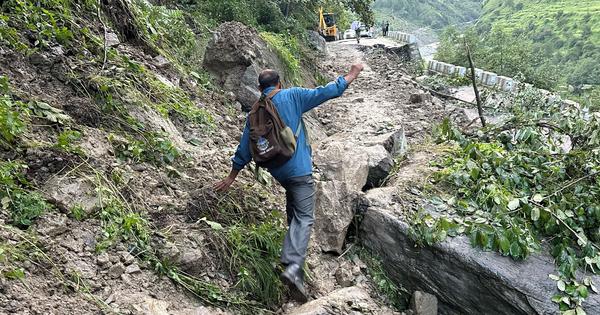Uttarakhand’s development efforts overshadowed by environmental degradation and inadequate governance since statehood.
The state of Uttarakhand was established on November 9, 2000, with hopes for improved governance and quality of life for its residents. Shortly after its formation, a personal connection to the region compelled me to speak at an event in Mussoorie, reflecting on the pride felt by those from the area. With a history intertwined with the movement for statehood from the hill districts of Uttar Pradesh, there was optimism that Uttarakhand would mirror the social and economic advancements seen in Himachal Pradesh.
As Uttarakhand approaches its twenty-fifth anniversary, the political landscape has seen the Congress party in power for a decade and the Bharatiya Janata Party (BJP) for fifteen years. While the current government may present a festive front, the reality reveals a stark lack of meaningful progress in critical sectors such as education, healthcare, and women’s safety. The BJP’s tenure has been marked by the promotion of Hindu majoritarianism, leading to the marginalization of minorities and fostering an atmosphere of fear in a region historically free from significant inter-religious tensions.
Successive governments have implemented policies that prioritize large-scale development projects, which have often resulted in environmental degradation rather than true advancement. The construction of poorly designed roads and ill-conceived dams has wreaked havoc on the fragile Himalayan ecosystem. The Char Dham highway project is a prime example of this trend, continuing despite substantial scientific evidence highlighting its destructive impact. Since the year 2000, nearly 50,000 hectares of forest have been lost to these projects, leading to the estimated destruction of 150 million trees, with significant economic and environmental repercussions.
The Himalayas are not only beautiful but also a delicate ecosystem requiring a robust forest cover to sustain local economies and prevent disasters such as soil erosion and flooding. The government’s attempts to modernize and develop the region have inadvertently made it more susceptible to environmental calamities, evidenced by the increasing frequency of landslides and floods attributed to human actions rather than mere natural occurrences.
Plans for elevated highways in Dehradun exemplify the questionable priorities of the current administration. These proposed highways, designed primarily for tourist access, come with a hefty price tag of approximately Rs 6,000 crore and threaten to displace residents while exacerbating soil erosion and flood risks. Local citizens express concerns that this project serves to benefit only those involved in government contracts while disregarding the needs of the community. The lack of transparency surrounding the project has only heightened anxieties about its potential consequences.
Experts warn of the extensive soil excavation required for these highways and the risks posed to local waterways, which play a crucial role in groundwater recharge. By obstructing these natural systems, the government may inadvertently invite more severe flooding during monsoons and drought conditions in the summer months. As Uttarakhand celebrates its statehood anniversary, the focus must shift toward addressing the pressing issues of governance and sustainable development that have long been overlooked.








